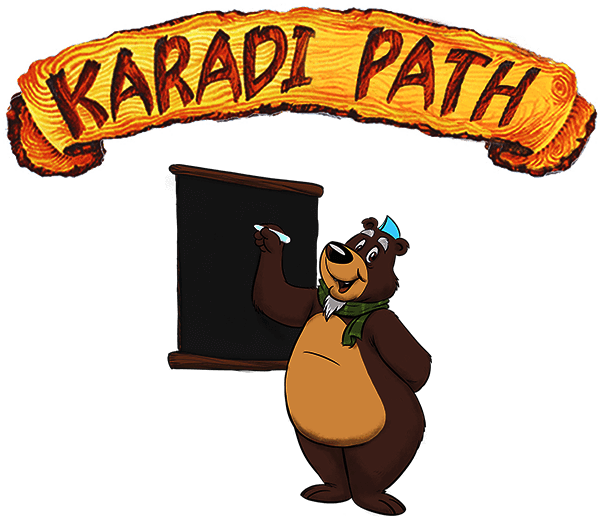Karadi Path is a completely entertaining and stress free programme that creates a structured classroom environment that mirrors the mother tongue learning process. Children learn by experiencing English with their body, through music, visuals and stories. They learn the language mainly through listening, using a variety of interesting audio material. Your child will become very comfortable understanding and speaking English at a basic level. This lays a solid platform from which the child can progress with textbook methods.

Based on a decade long research into the derivative processes of language acquisition, Karadi Path has developed an intuitive process of language-learning that mirrors mother-tongue assimilation. This approach delivers an English environment to the classroom through a multi-modal design, from which learners can derive the semantics, syntax and structure of a language. Children enjoy the structured activities of Karadi Path and there is no homework based on this programme. Karadi Path adopts the process of mother tongue learning and all the activities will be conducted at school without the need to be taught at home.
Children would develop
- Expanded vocabulary and writing skills
- Longer attention spans, promoting better retention of information
- Enhanced imaginative and critical thinking skills
- Enhanced memory and higher levels of concentration
- Leads to overall academic keenness
- Efficient and effortless learning
Aimed at bolstering student’s English language proficiency, the Karadi Path methodology is being practised from classes KG to II Std. The core of the Karadi Path methodology lies in the natural way we acquire languages, whether it is the mother tongue or languages that we constantly hear around us.
The Karadi Path method can be described as:
- Intuitive: Uses intuitive intelligence (right-brain oriented ) over logical intelligence (left-brain oriented), the intelligence with which we learn to walk, learn our mother tongue and learn to sing.
- Immersive: Creates a rich immersive language environment in the classroom through various modes.
- Non-linear: Provides multiple paths to the goal of language learning allows every individual learner to use his or her preferred way of learning.
- Non-instructional: All learning is delivered experientially without any instructions and without explaining meanings of words or phrases.
- Multi-Sensorial: Learning language through listening, seeing and doing with a high focus on listening.
- Multi-modal: Learning language through multiple modes such as physical activity, music and stories.


